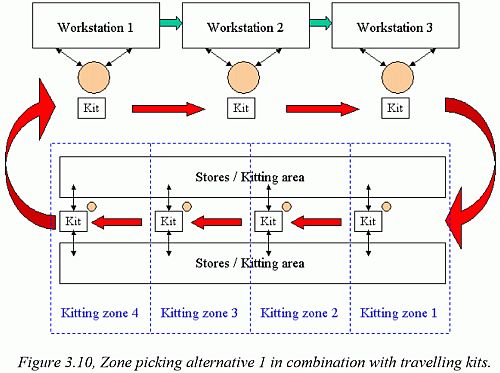In manufacturing systems, the practice of delivering components and subassemblies to the shop floor in predetermined quantities that are placed together in specific containers is generally known as kitting.
This idea is obviously much older. From doing some research, I found articles going back to 1990s describing kitting:
The idea of using kits seems to be old even by the article titled, "Kitting versus line stocking: A conceptual framework and a descriptive model" (Bozer and McGinnis, 1992).
One of the common complaints in the literature seems to be that kitting does not add value; it is just a form of buffering in the supply chain. A movement to make kitting leaner or remove it entirely seems to have been discussed in the mid 2000s (Vujosevic, 2008). But the problem at that time was that kitting was controlled by the inventory management team, which had no direct or real-time feedback from the production line. When a computerized Manufacturing Execution System (MES) was integrated into the kitting process, there was more value added.
Skipping ahead a few years and watching some online videos (Muir Omni Graphics, 2012, Youtube), kitting seems to have been integrated into much more diverse applications, e.g., printing stickers on a sheet of paper. Some people consider kitting to be part of 5S, a specific type of organization. Really, all of these ideas lead back to Japanese manufacturers in the 1980s, and by that I mean the Toyota lean manufacturing revolution. But since Taiichi Ohno was inspired by the efficiency of American supermarkets in the 1950s, it's fair to use the ideas of the Toyota Production System in modern processes (e.g., kitting).
So the origin of kitting is somewhere in either a 1950s shopping cart or a 1980s Toyota kit, but either way it's coming from lean manufacturing. I think one of the best examples of this type of manufacturing was covered in the NPR story, "NUMMI". I highly recommend it.
